 October 29, 2015 John E. Ross, KD8IDJ, Editor
| ||||||
World Radiocommunication Conference 2015 Starts on November 2 Amateur Radio's interests will be well represented as the 2015 ITU World Radiocommunication Conference (WRC-15) convenes on November 2 in Geneva, Switzerland. Preparations have been under way since the last WRC wrapped up in 2012. Held every 3 or 4 years, WRCs review, and, if necessary, revise the Radio Regulations -- the international treaty governing the use of the radio frequency spectrum. Delegates will consider several items of interest to the Amateur Radio community The primary WRC-15 agenda item of interest to most radio amateurs is Agenda Item 1.4, which calls on delegates to consider the possibility of allocating an appropriate amount of spectrum -- not necessarily contiguous -- to the Amateur Service on a secondary basis within the band 5250-5450 kHz. Many amateurs have been hoping for a band, rather than the discrete channels now available in the US and in several other countries. "While efforts of the IARU and its member societies have led four regional organizations to make affirmative proposals -- two of them quite generous -- the outcome of this item remains uncertain," said ARRL CEO David Sumner, K1ZZ, who will be attending WRC-15 briefly to support the IARU team. He explained that several major countries, including Canada, Russia, the UK, and the US, view an allocation in the triple digits of kilohertz as too generous and, except for Russia, have not signed on to regional proposals. Russia leads a regional proposal for no change. Canada has proposed allocating 50 kHz in two 25 kHz blocks, but several countries, including the US, are on record as opposing an allocation.
"We are disappointed that the United States was unable to join the Inter-American Proposal (IAP), which is admittedly more generous than we expected the US to be able to support," Sumner said. "With the neighboring countries of Mexico supporting the IAP, Canada proposing two 25 kHz segments, and Cuba proposing a contiguous 27 kHz band, and with affirmative proposals for an amateur allocation having been submitted on behalf of dozens of other countries, we remain hopeful that a positive consensus will emerge that the US, in the end, will be able to accept." Countries opposed to any change have argued that propagation characteristics near 5 MHz are ideal to support reliable operation of the incumbent HF services. Current primary non-government occupants of the band are fixed and mobile services, except aeronautical mobile, and radiolocation in the 5250-5275 kHz segment. Other items that could affect Amateur Radio include:
National Emergency Net Activates in Mexico for Category 5 Hurricane Patricia In the face of the approaching Category 5 Hurricane Patricia, Mexico's National Emergency Net activated on October 23 along Mexico's Pacific Coast, an area popular with tourists. Nets were established on 75, 40, and 20 meters, and on VHF repeaters. The storm, the most powerful hurricane ever Omar Alvarez, XE1AO, a faculty member at the University of Colima, initially activated a net October 22 on 7060 kHz (LSB) from the University, which has its own amateur station. Other stations checked in from the capital city of Colima. The net stood down at 0700 UTC on October 24, ending the emergency. "The net involved 110 stations in the Republic of Mexico," Zian Aguirre, XE1ATZ, told ARRL. "Nine stations were on the air from Colima State, closest to shore, including some in the port of Manzanillo. The hurricane hit about 65 miles from Manzanillo, in a community called 'La Manzanilla,' and the impact zone extended from El Paraiso Beach in Colima to the town of Chamela in Jalisco."
In the storm's wake, civil protection authorities, the Red Cross, and the Mexican military were on duty, and radio amateurs were standing by to handle any communication needs, Aguirre said. "Fortunately in the city of Colima, where I live, the effects of the hurricane were few -- mainly downed trees and some damaged roads," Aguirre said. "There was no loss of life; preventive action paid off magnificently." Tens of thousands were evacuated in advance of the dangerous storm. As it approached landfall, the National Hurricane Center in Miami had called the Category 5 storm "potentially catastrophic." The minimum central pressure estimated from NOAA aircraft data was an extremely low 25.96 inches. ARRL Field Day 2015 Results Now Available Results of ARRL Field Day 2015 are now available. These include the searchable scores database, the soapbox, and the QST results article (PDF). A total of 2720 stations submitted entries for the ever-popular June 27-28 event.
The number of logs received appears to be an all-time ARRL Field Day record. This year saw 35,369 participants, down slightly from 2014. A total of 1247 entries claimed the broad classification of "A" (which includes generator, commercial, and alternate/battery-powered entries). Joining that core group operating in temporary setups were an additional 315 Class B entries (one- or two-person entries). This indicates that 58 percent of all Field Day 2015 participants in some way took to the field. ARISS Celebrates 1000th Event, 15 Years of Permanent Ham Radio Presence in Space This month, the Amateur Radio on the International Space Station (ARISS) program marked its 1000th space station Amateur Radio event, continuing a string that started 15 years ago, when the program established the first permanent ham radio presence in space. The inaugural ARISS contact took place on December 21, 2000, between a member of the ISS Expedition 1 crew and youngsters at Luther Burbank "It has always been all about youth, piquing their interest in Amateur Radio, science, technology -- especially wireless technology -- engineering, math, and aerospace...really anything educational, and it will always be about these things," said ARISS International Secretary Rosalie White, K1STO. While on the ARRL Headquarters staff, White was in on the ground floor of ARISS, which grew out of the space shuttle-era SAREX (Space Amateur Radio EXperiment). She represented ARRL, an ARISS partner, in initial discussions to set ARISS into motion.
In 1996, with the ISS still a few years off, the SAREX team decided not to wait until the first crew was on station to start thinking about getting Amateur Radio on board, White said. By then it would be too late to ensure equipment room in the ISS's tight quarters as well as to address cabling, antennas, power, flight certification -- myriad details that also included both NASA and Russian approvals and licensing astronauts. NASA stipulated that it wanted a single, worldwide group to be solely responsible for "everything Amateur Radio" on the ISS. With a lot of hard work, an ARISS team based on countries having space agencies supporting the ISS -- Canada, Japan, Russia, several European countries, and the US -- was pulled together. White said it was "a monumental task" to get everyone to the US for the scheduled meeting dates in November 1996. "In the end, at least one Amateur Radio operator came from Canada, Japan, Europe, Russia, and the United States, the areas now known as ARISS regions," White said. "That's how it all began!" ARRL Education Services Manager Debra Johnson, K1DMJ, said NASA will be celebrating the arrival of the first crew to inhabit the ISS. "The ham radio gear was activated a few days later," she said. "Amateur Radio is considered the first ISS payload."
ARISS touches tens of thousands of students per year. One ARISS goal is to inspire an interest among young people in science, technology, engineering, and math (STEM) subjects and in STEM careers. Another is to provide an educational opportunity for students, teachers, and the public to learn about space exploration and satellites, as well as about wireless technology and radio science through Amateur Radio. The program has made a positive impression on educators, with 92 percent of those who have been involved indicating that ARISS provided ideas for encouraging student exploration, discussion, and participation, and 78 percent saying that ARISS was effective in stimulating student interest in STEM. The proposal submission deadline is looming for schools, educational organizations, and groups willing and able to host an ARISS contact in 2016. The window for formal and informal proposals closes on November 1. In an era of tighter NASA budgets, ARISS International President Frank Bauer, KA3HDO, recently indicated that ARISS needs to raise $90,000 annually to maintain its current level of operation, and $214,000 to grow operations and meet its desired goals. ARISS encourages donations via the AMSAT website (select the "ARISS Donate" button). Individuals contributing $100 or more will receive the new ARISS Challenge Coin. UK to Auction Former Ham Radio Spectrum Spectrum at 2.3 and 3.4 GHz that once was allocated to Amateur Radio is going on the auction block in the UK. Telecommunications regulatory agency Ofcom announced this week the steps it will take in selling off the shared spectrum it took back after the military no longer needed it. Ofcom announced in April 2014 that it was ending Amateur Radio access to significant portions of the 2.3 and 3.4 GHz bands following a year-long consultation -- a rule making proceeding -- that involved the release by the Ministry of Defence (MoD) of 40 MHz of spectrum at 2.3 GHz and 150 MHz of spectrum at 3.4 GHz. Amateur Radio was secondary on both bands.
Amateur Radio lost privileges on frequencies in the two bands that overlapped with the 190 MHz of spectrum that Ofcom now has put on the block -- 2350 to 2390 MHz and 3410 to 3475 MHz. Amateur Radio will retain access to the adjacent bands, but Ofcom has put procedures in place to remove even those frequencies from Amateur Radio access, if necessary in the future. Ofcom said in 2014 that, with military and other government use of the 2.3 and 3.4 GHz spectrum ending, it believed that "an award of the spectrum for high power use is likely to deliver greater benefit to UK consumers and citizens than continued amateur use." The MoD plan is part of a government commitment to release 500 MHz of spectrum by 2020 for new civil uses "based on growing demand from UK consumers for spectrum-hungry devices such as smartphones and tablets." Ofcom has said it would make 2300-2302 MHz available for amateur use, but licensees first must obtain a Notice of Variation to their licenses. Hams in the US have access to 2300-2310 MHz, 2390-2450 MHz (Amateur Radio in the US is primary in the band 2390-2417 MHz), and 3300-3500 MHz. Neither the affected 2350-2390 MHz segment nor the 2310-2350 MHz that may be removed down the road in the UK has been available to US amateurs for many years. In the international Table of Frequency Allocations, the 3.4-3.6 GHz band is designated for future mobile wireless broadband in many countries, including the UK, but not in the US. Germany and Israel are the only ITU Region 1 countries with amateur allocations at 3400-3475 MHz. -- Thanks to RSGB, Ofcom It's ARRL November Sweepstakes Season! ARRL November Sweepstakes -- two weekends of fun on CW and SSB, respectively -- are just ahead. The CW event is November 7-9; the phone weekend is November 21-23. The contest period runs from 2100 UTC on Saturday through 0259 UTC Monday. Those planning to participate should check out the 2015 Operating Guide (PDF). "More activity means more fun for everyone!" said ARRL November Sweepstakes Manager Larry Hammel, K5OT.
Affiliated Club competition continues to be a very popular aspect of Sweepstakes each year. Even members who cannot put in a full-time effort can contribute. The Clean Sweep mug -- for working all 83 ARRL/RAC sections -- is available again this year, as are Participation Pins for anyone who completes more than 100 contacts on CW or phone during Sweepstakes. Use of 146.52 MHz FM Simplex Frequency Cleared for ARRL Contests The ARRL Programs and Services Committee earlier this year unanimously adopted a recommendation from its VHF and Above Revitalization Committee to remove the rule prohibiting the use of 146.52 MHz simplex for making contest contacts. The change becomes effective in 2016, starting with the ARRL January VHF Contest.
The change will also be incorporated into the ARRL Field Day rules This change eliminates Rule 1.8 in the "General Rules for ARRL Contests Above 50 MHz," with subsequent Rule 1 sections renumbered accordingly. -- Thanks to Dan Henderson, N1ND, Regulatory Information Manager/Acting Contest Manager Amateur Radio is on National Tribal Assistance Coordination Group Workshop Program ARRL Oklahoma Section Manager Lloyd Colston, KC5FM, will be among the presenters at the national 2015 National Tribal Assistance Coordination Group (TAC-G) Workshop, November 3 to November 5 in Catoosa, Oklahoma. Colston will speak on "Social Media in Emergency Management/Amateur Radio."
The 2015 TAC-G National Workshop is aimed at providing an opportunity for collaboration with individuals and organizations that offer assistance to American Indians and Alaska natives, tribes, and tribal governments during emergencies and disasters. During his 45-minute presentation, Colston said, he'll offer a broad overview of Amateur Radio and will touch upon the Amateur Radio Emergency Service (ARES), Radio Amateur Civil Emergency Service (RACES), Military Auxiliary Radio Service (MARS), and SKYWARN. "I will also be covering social media as it relates to emergency management and the Virtual Operations Support Team concept," Colston said. Colston, who will represent the League as an ARRL Section Manager, has served since 2014 as the head of Oklahoma's field organization. He will wear additional hats as vice president of the Virtual Emergency Management Association and as the emergency management director for Altus, Oklahoma. He also serves as Oklahoma Section Public Information Coordinator. ARRL Medium-Wave Experimenters Sponsoring November Special Event The 107th anniversary of the Berlin Treaty, which created the international distress frequency at 500 kHz, will be the occasion for a special event operation in that vicinity of the spectrum. The event, announced by ARRL Medium-Wave Experiment (WD2XSH) Coordinator Fritz Raab, W1FR, set for the November 13-14 weekend, will involve experimental operators in the US, Canadian Amateur Radio stations, and US heritage maritime stations.
Activity for the special event will focus on 465 to 480 kHz and 495 to 510 kHz, since different licensees have different frequency authorizations, Raab explained. Designated calling frequencies are 475 kHz for the lower segment, and 500 kHz for the upper. Raab said the Maritime Radio Historical Society (MRHS) will conduct a mini "Night of Nights" on Saturday night, with special attention to MF operation. "This will give listeners the best chance of copying their MF signals by operating during the winter and extending our operating hours well into the evening Pacific time," Raab said. MRHS Coast Station operstors KPH will keep 426 and 500 kHz active with messages and will verify listener reports. Five Canadian amateurs are expected to operate in the 472-479 kHz band. "In addition to activities similar to those of the US experimental stations, the Canadian amateurs will conduct cross-band communication tests with amateurs operating on 80 and 40 meters," Raab said. "All stations will either call CQ or send VVV marker beacons while listening on their respective QSX frequencies," Raab said. Stations will announce their listening frequencies. Read more.
In Brief...
. . . . . . . The K7RA Solar Update Tad Cook, K7RA, Seattle, reports: Solar flux and sunspot numbers barely budged last week. Average daily sunspot numbers went from 75 in the previous 7 days to 77.6 in the week ending October 28. Average daily solar flux slipped from 118.2 to 110.9.
Predicted planetary A index is 15 and 12 on October 29-30; 15 on October 31 through November 1; 12 on November 2; then very high disturbed values of 55, 50, and 30 on November 3-5; 12 on November 6-7; and 20, 25, and 20 on November 8-10; Geomagnetic conditions remain unsettled and active. On November 30 through December 2 planetary A index is predicted to rise to 50, 40, and 25, an echo of the high values on November 3-5. In fact, this activity would be from the same area of the sun a whole solar rotation later. Sunspot numbers for October 22 through 28 were 94, 91, 74, 63, 72, 78, and 71, with a mean of 77.6. The 10.7 cm flux was 120.5, 114.9, 106.3, 106.4, 106.2, 110.1, and 112.2, with a mean of 110.9. Estimated planetary A indices were 6, 7, 11, 8, 3, 4, and 3, with a mean of 6. Estimated mid-latitude A indices were 4, 5, 10, 7, 2, 3, and 1, with a mean of 4.6. Send me your reports and observations. Just Ahead in Radiosport
See the ARRL Contest Calendar for more information. Upcoming ARRL Section, State, and Division Conventions and Events
Find conventions and hamfests in your area.
. . .
Subscribe to...
Free of charge to ARRL members...
| ||||||
.png) during the nearly month-long international gathering. Two ARRL staff members will be on the US delegation to WRC-15 -- Chief Technology Officer Brennan Price, N4QX, and Technical Relations Specialist Jon Siverling, WB3ERA. International Amateur Radio Union (
during the nearly month-long international gathering. Two ARRL staff members will be on the US delegation to WRC-15 -- Chief Technology Officer Brennan Price, N4QX, and Technical Relations Specialist Jon Siverling, WB3ERA. International Amateur Radio Union (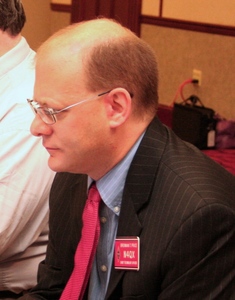
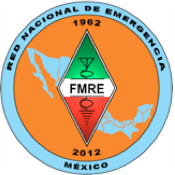 recorded in the Western Hemisphere by the National Hurricane Center, brought sustained winds of up to 200 MPH as it made landfall along a less-populated stretch of coastline. The storm downed trees, flooded streets, and buffeted buildings, but quickly lost strength in the mountains and was downgraded to a tropical storm. Remnants of the storm eventually caused some heavy rainfall and flooding in the US.
recorded in the Western Hemisphere by the National Hurricane Center, brought sustained winds of up to 200 MPH as it made landfall along a less-populated stretch of coastline. The storm downed trees, flooded streets, and buffeted buildings, but quickly lost strength in the mountains and was downgraded to a tropical storm. Remnants of the storm eventually caused some heavy rainfall and flooding in the US.
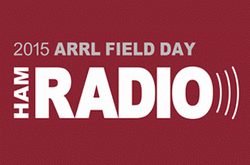 While propagation was on the sorry side for Field Day 2015, the number of contacts for this year's event rose slightly over 2014 -- a modest 1.1 percent -- and CW contacts account for all of that increase; phone and digital contact numbers dipped slightly in 2015. Nearly 1.3 million contacts were logged during FD 2015.
While propagation was on the sorry side for Field Day 2015, the number of contacts for this year's event rose slightly over 2014 -- a modest 1.1 percent -- and CW contacts account for all of that increase; phone and digital contact numbers dipped slightly in 2015. Nearly 1.3 million contacts were logged during FD 2015.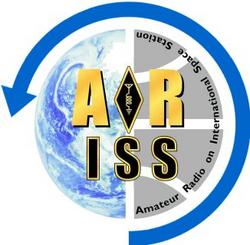 Elementary School near Chicago. Several pupils and a teacher got to chat on 2 meters with "Space Station Alpha" Commander William "Shep" Shepherd, KD5GSL. The contact had a rocky start. Attempts by the school a couple of days earlier had been unsuccessful, despite extensive technical preparations hampered by snowstorms and sub-freezing temperatures. That contact marked the first use of the special NA1SS call sign for a school contact.
Elementary School near Chicago. Several pupils and a teacher got to chat on 2 meters with "Space Station Alpha" Commander William "Shep" Shepherd, KD5GSL. The contact had a rocky start. Attempts by the school a couple of days earlier had been unsuccessful, despite extensive technical preparations hampered by snowstorms and sub-freezing temperatures. That contact marked the first use of the special NA1SS call sign for a school contact.
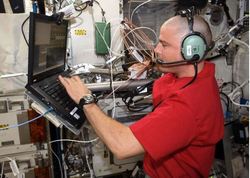
 "We expect the award frequencies to be of interest to mobile network operators (MNOs) and others involved with mobile broadband," Ofcom said in its
"We expect the award frequencies to be of interest to mobile network operators (MNOs) and others involved with mobile broadband," Ofcom said in its 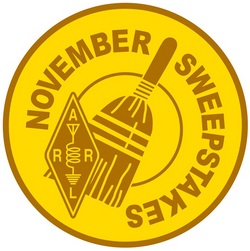 Sweepstakes is the ARRL's oldest "domestic" contest and is one in which stations may only contact each other once on any band. The multipliers are official ARRL and RAC sections. Some are especially rare, so keep your ears open! For stations in the United States and Canada (including territories and possessions), the object is to exchange the required contact information with as many other US and Canadian stations as possible on 160, 80, 40, 20, 15, and 10 meters. There are several entry classes.
Sweepstakes is the ARRL's oldest "domestic" contest and is one in which stations may only contact each other once on any band. The multipliers are official ARRL and RAC sections. Some are especially rare, so keep your ears open! For stations in the United States and Canada (including territories and possessions), the object is to exchange the required contact information with as many other US and Canadian stations as possible on 160, 80, 40, 20, 15, and 10 meters. There are several entry classes.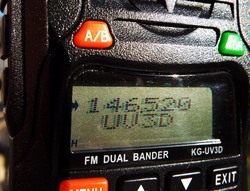 The VHF and Above Revitalization Committee concluded that the restriction was no longer necessary. The committee felt that permitting the use of 146.52 MHz would allow new/curious contesters possessing only FM-mode radios to stumble upon more contacts, increasing their chances of being drawn further into VHF+ contesting -- the primary aim of the Revitalization Committee.
The VHF and Above Revitalization Committee concluded that the restriction was no longer necessary. The committee felt that permitting the use of 146.52 MHz would allow new/curious contesters possessing only FM-mode radios to stumble upon more contacts, increasing their chances of being drawn further into VHF+ contesting -- the primary aim of the Revitalization Committee.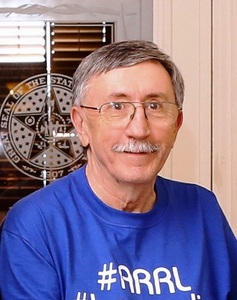
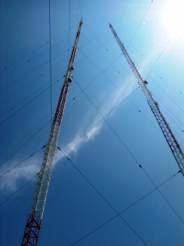 "For US experimental ops, this will be a CW event," Raab said. "Some stations will run beacons with special messages, and some will offer special QSLs. Other stations will simulate maritime communication. They will call CQ on a designated calling frequency and then QSY to complete the QSO. Silent periods will be observed. Some stations will pass message traffic."
"For US experimental ops, this will be a CW event," Raab said. "Some stations will run beacons with special messages, and some will offer special QSLs. Other stations will simulate maritime communication. They will call CQ on a designated calling frequency and then QSY to complete the QSO. Silent periods will be observed. Some stations will pass message traffic."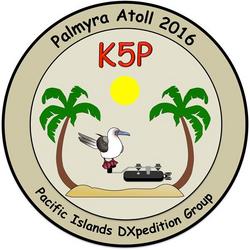 Palmyra DXpedition to Sign On as K5P: When the
Palmyra DXpedition to Sign On as K5P: When the 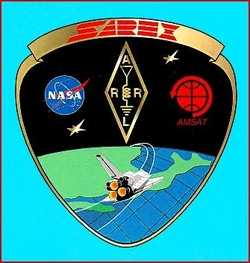 SAREX Reflector to Close on November 1 The SAREX (Space Amateur Radio EXperiment) reflector will close on November 1, and its functions will be folded into the AMSAT-BB list. Those subscribed to both SAREX and AMSAT-BB will not need to take any action. The SAREX archives will continue to be available for historical purposes.
SAREX Reflector to Close on November 1 The SAREX (Space Amateur Radio EXperiment) reflector will close on November 1, and its functions will be folded into the AMSAT-BB list. Those subscribed to both SAREX and AMSAT-BB will not need to take any action. The SAREX archives will continue to be available for historical purposes.  Ham Radio Used to Gather Election Results from Remote Polling Station in India: Don't look for anything like this to happen in the US anytime soon, but the New Indian Express
Ham Radio Used to Gather Election Results from Remote Polling Station in India: Don't look for anything like this to happen in the US anytime soon, but the New Indian Express 
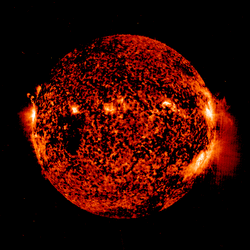 Predicted solar flux is 115 and 110 on October 29-30; 105 on October 31 and November 1; 100 on November 2; 95 on November 3-4; 90 on November 5; 85 on November 6-8; 90 on November 9; 95 on November 10-11; 100, 105, and 110 on November 12-14; 115 on November 15-16, and 120 on November 17. Flux values then drop to 85 on November 30 through December 5, and then rise above 100 a few days later.
Predicted solar flux is 115 and 110 on October 29-30; 105 on October 31 and November 1; 100 on November 2; 95 on November 3-4; 90 on November 5; 85 on November 6-8; 90 on November 9; 95 on November 10-11; 100, 105, and 110 on November 12-14; 115 on November 15-16, and 120 on November 17. Flux values then drop to 85 on November 30 through December 5, and then rise above 100 a few days later.







